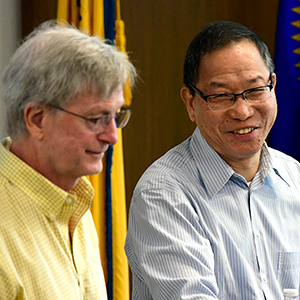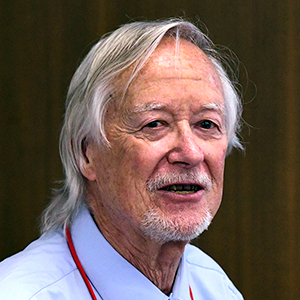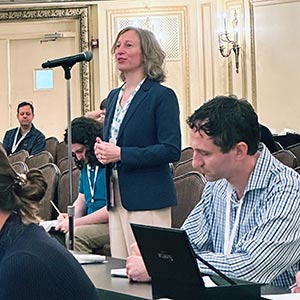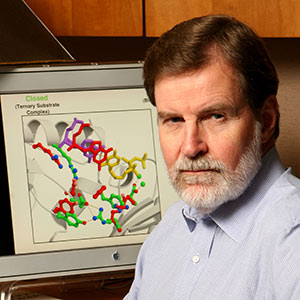Early in her career, Jacqueline Barton, Ph.D., was among the first to observe that DNA provides a medium for electron transfer, or movement of an electron from one molecule to another. Barton, a John G. Kirkwood and Arthur A. Noyes Professor of Chemistry at the California Institute of Technology, talked about that work April 9 as part of the NIEHS Distinguished Lecture Series.
Stephanie Smith-Roe, Ph.D., a genetic toxicologist in the Biomolecular Screening Branch, hosted the seminar.
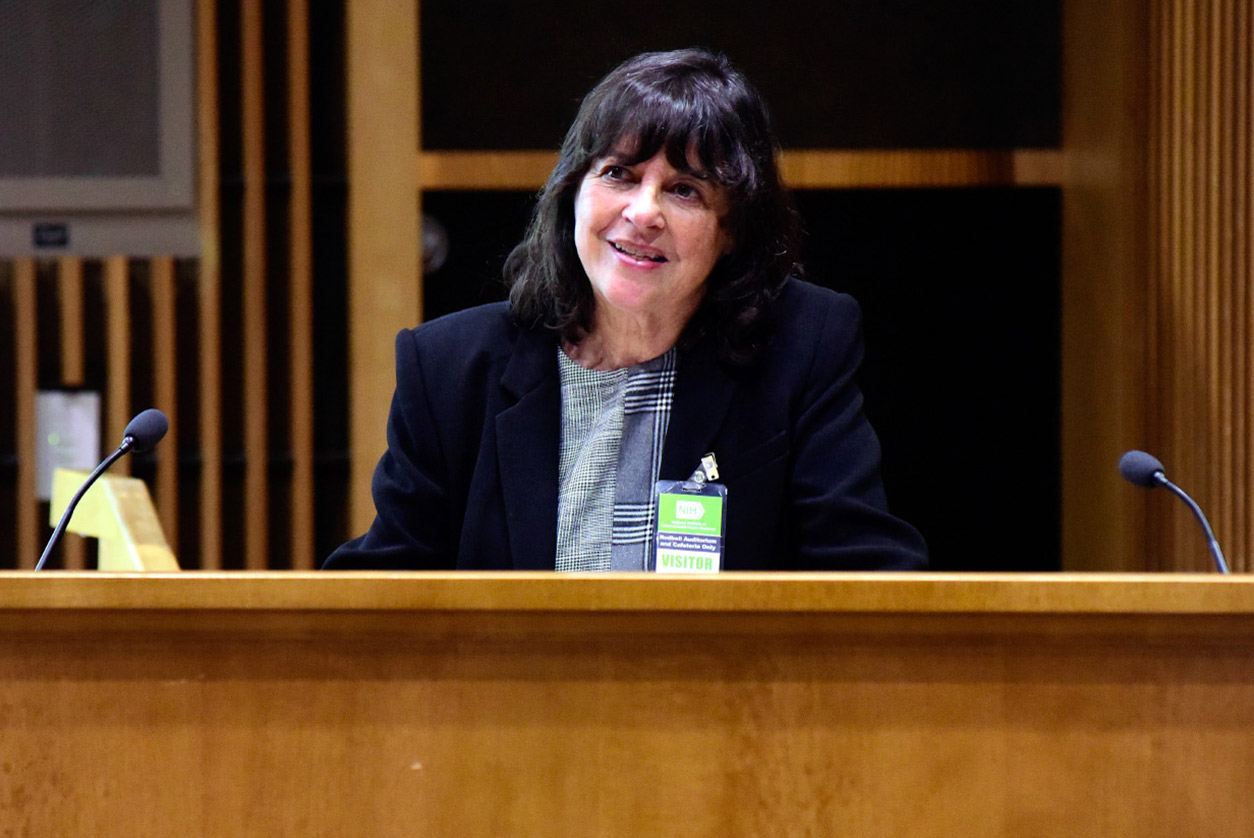 Barton is also the Norman Davidson Leadership Chair of the Division of Chemistry and Chemical Engineering at the California Institute of Technology. (Photo courtesy of Steve McCaw)
Barton is also the Norman Davidson Leadership Chair of the Division of Chemistry and Chemical Engineering at the California Institute of Technology. (Photo courtesy of Steve McCaw)DNA signaling
During an electron transfer, one molecule is oxidized, or loses an electron, while another molecule is reduced, or gains that electron. The combination of the two is known as a redox reaction, and it is one of the most fundamental processes that occurs in living systems.
Redox reactions are studied in the field known as DNA charge transport chemistry, or what Barton calls DNA signaling or DNA electrochemistry. She said that the base pairs of DNA are stacked one on top of another, and this stacking is responsible for the stability of the DNA molecule.
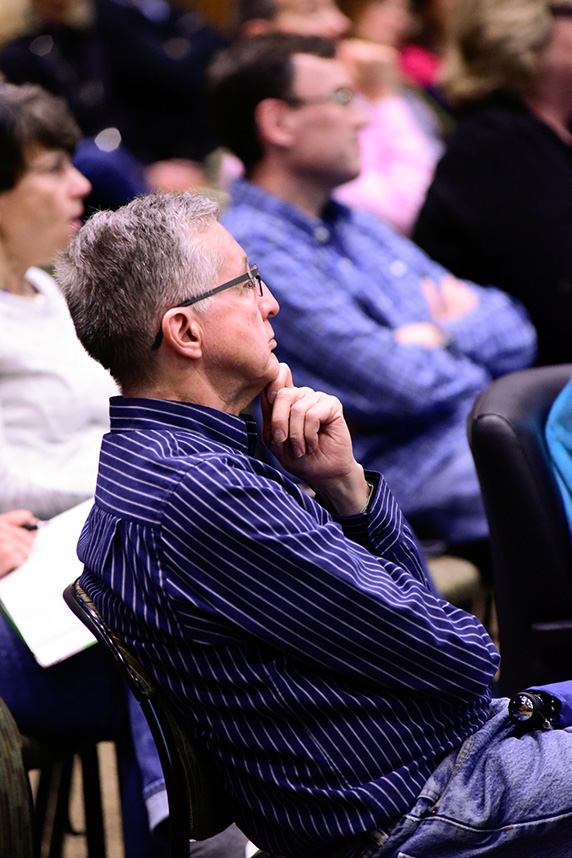 David DeMarini, Ph.D., a genetic toxicologist at the U.S. Environmental Protection Agency, has taught Barton’s work in his lectures on mutagenesis and cancer at University of North Carolina-Chapel Hill and Duke University. (Photo courtesy of Steve McCaw)
David DeMarini, Ph.D., a genetic toxicologist at the U.S. Environmental Protection Agency, has taught Barton’s work in his lectures on mutagenesis and cancer at University of North Carolina-Chapel Hill and Duke University. (Photo courtesy of Steve McCaw)Her group has used a range of techniques to examine how electrons migrate along the axis of the DNA helix. One method measures electrons moving from a gold surface through DNA to a redox probe that is bound to DNA in solution (see sidebar).
Using this approach, her group and other scientists have learned two fundamental characteristics of this chemistry.
- Charge transport chemistry can occur over long molecular distances.
- Anything that interferes with the stacking of DNA bases is going to turn off electron transfer.
The chemistry of nature
Barton studied base excision repair (BER) enzymes and what happens when these proteins scan DNA for damage. Based on her model, she suggested that a BER protein with an iron-sulfur cluster can bind to DNA, shifting its electrical potential.
The enzyme may release an electron and send it to another BER protein that is bound at a more distant site in the genome. A BER protein bound in another site will lose an electron, making it fall off the DNA, and go to another site on the strand. If it goes to a part of the DNA that has a lesion, it can fix it.
'By checking electron flow, DNA repair proteins can be attracted to regions where mismatches or lesions have occurred, giving us a new understanding of how perturbations are detected in a sea of otherwise normal DNA,' Smith-Roe said.
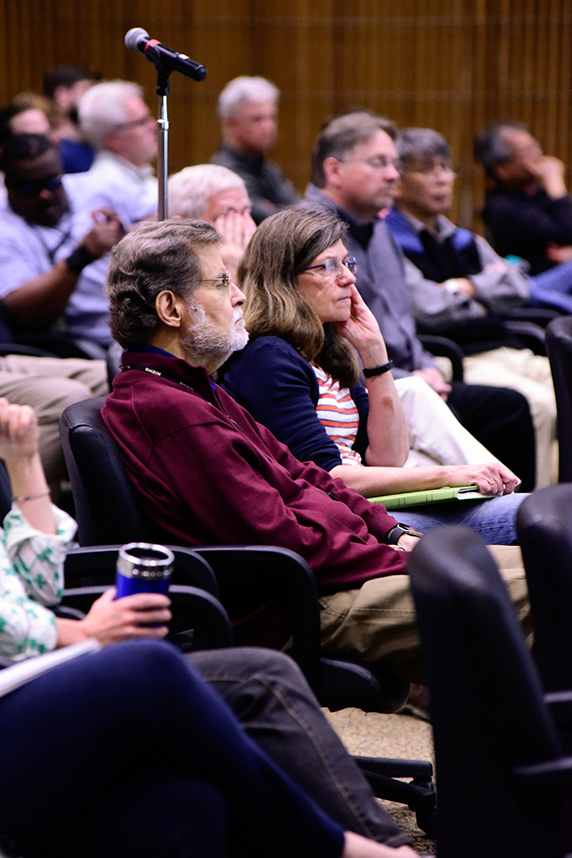 DNA experts, Wilson, left, and staff scientist Kasia Bebenek, Ph.D., listened intently to the lecture. Wilson met with Barton to discuss her research. (Photo courtesy of Steve McCaw)
DNA experts, Wilson, left, and staff scientist Kasia Bebenek, Ph.D., listened intently to the lecture. Wilson met with Barton to discuss her research. (Photo courtesy of Steve McCaw)Under conditions of oxidative stress, Barton said guanine radicals are formed in DNA, and these radicals carry out electron transfer with proteins that contain an iron-sulfur cluster. Electron transfer activates them toward oxygen and provides the signal for oxidative stress.
'This is chemistry that can be powerfully applied to monitor the integrity of DNA, and it can do so from long range,' Barton said. 'It offers an opportunity for the regulation of various DNA processes that are involved in and dependent upon the integrity of DNA.
Samuel Wilson, M.D., head of the NIEHS DNA Repair and Nucleic Acid Enzymatic Group, attended the lecture. He noted that Barton’s work has exciting implications, because the findings relate to coordination of DNA-enzyme transactions during DNA repair, replication, and transcription.





